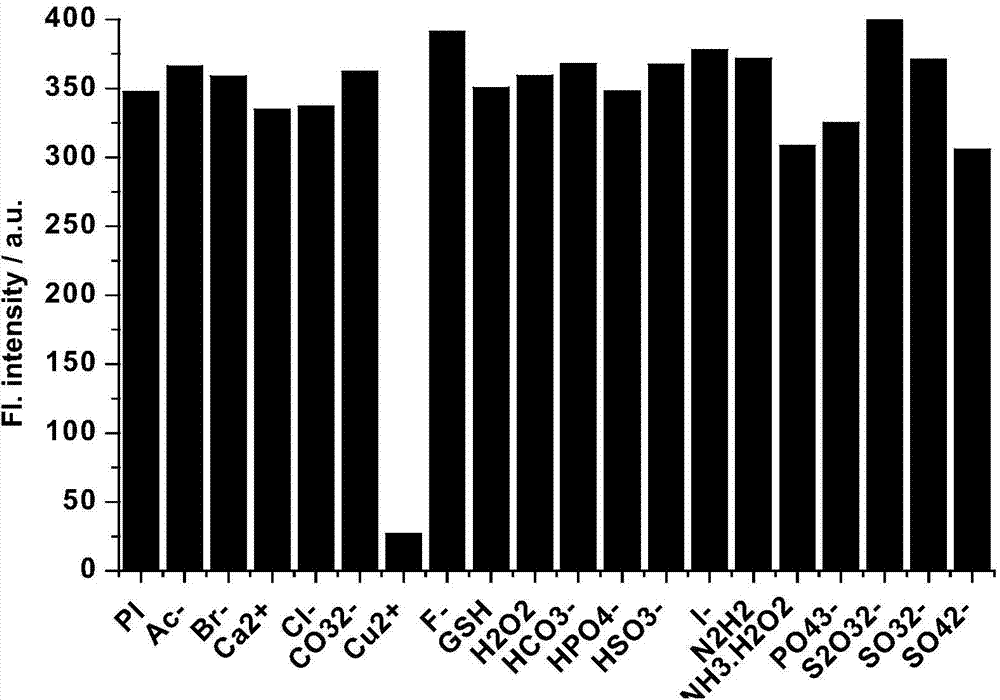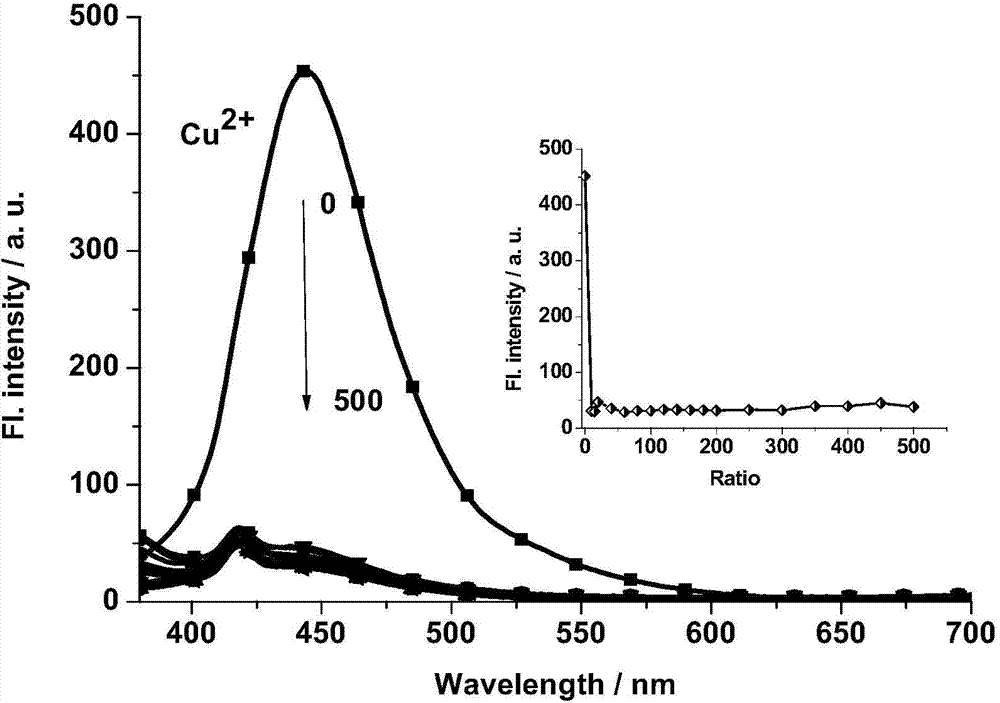Fluorescent probe for specially identifying bivalent copper ions in water phase and application thereof
A technology of divalent copper ions and fluorescent probes, which is applied in the direction of fluorescence/phosphorescence, luminescent materials, chemical instruments and methods, etc., and can solve the problems of low selectivity, low biological practicability, poor specificity or specificity, etc. , to achieve the effect of high fluorescence quantum yield
- Summary
- Abstract
- Description
- Claims
- Application Information
AI Technical Summary
Problems solved by technology
Method used
Image
Examples
Embodiment 1
[0025] Synthesis of 3-hydroxy-4-(1hydro-phenanthrenequinone[9,10-d]imidazol-2-ethyl)phenyl 4-hydroxyl (1):
[0026] Mix 0.21g (1mmol) of phenanthrenequinone, 0.276g (2mmol) of 2,4-dihydroxybenzaldehyde, 1.54g ammonium acetate and 10mL glacial acetic acid in a 50mL round-bottomed flask, heat and reflux for 1h under nitrogen protection, and react The system changed from brown to reddish brown. After the reaction was completed, cool to room temperature, pour the liquid into 100 mL of ice water, filter the precipitate, wash with water three times and dry it, and recrystallize with ethanol to obtain a white solid. Yield: 83%.
[0027] 1 H NMR (400MHz, d 6 -DMSO), δ(ppm): 0.75-0.76(d, J=8.0Hz, 2H), 6.37-6.47(m, 6H), 6.162-6.159(t, J=0.6Hz, 2H), 5.73(m, 1H).
[0028] Synthesis of 3-hydroxy-4-(1hydro-phenanthrenequinone[9,10-d]imidazol-2-ethyl)phenyl 4-oxopentanoate (2):
[0029] 0.20 g (0.6 mmol) of compound (1), 0.17 g (1.5 mmol) of levulinic acid, 0.24 (1.2 mmol) of DCC, 0.00...
Embodiment 2
[0032] Solvation Effect of 3-Hydroxy-4-(1H-phenanthrenequinone[9,10-d]imidazol-2-ethyl)phenyl 4-oxopentanoate (PI)
[0033] Prepare in advance 1 serving of 10 mL of 10 -3 The N,N-dimethylformamide solution of M probe PI, then take 10 μL and add it to six identical 5mL volumetric flasks, dilute to 5mL with DMF, acetonitrile, PBS, methanol, tetrahydrofuran, and chloroform respectively, and then perform fluorescence detection (λ Ex =365nm,λ Em =450nm), see the results figure 1 ;
Embodiment 3
[0035] Calculate the quantum yield of probe PI in each solvent according to the data in Example 2.
[0036] The above calculation formula is as follows:
[0037] Φ s = Φ r ( A r ( λ r ) A s ( λ s ) ) ( I ( λ r ) I ( λ ...
PUM
 Login to View More
Login to View More Abstract
Description
Claims
Application Information
 Login to View More
Login to View More - R&D
- Intellectual Property
- Life Sciences
- Materials
- Tech Scout
- Unparalleled Data Quality
- Higher Quality Content
- 60% Fewer Hallucinations
Browse by: Latest US Patents, China's latest patents, Technical Efficacy Thesaurus, Application Domain, Technology Topic, Popular Technical Reports.
© 2025 PatSnap. All rights reserved.Legal|Privacy policy|Modern Slavery Act Transparency Statement|Sitemap|About US| Contact US: help@patsnap.com



